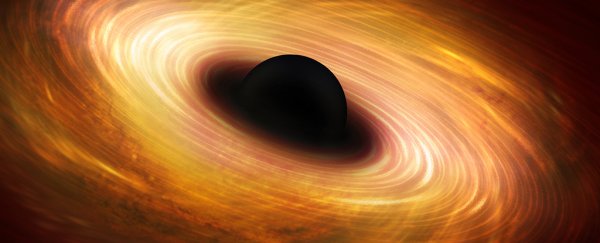The first real evidence for the existence of gravitational waves has got scientists reassessing what our Universe is actually made of, and an international team of researchers thinks space could be crowded with way more black holes than previously thought.
The prediction is based on a complex mathematical model of the cosmos, and if it turns out to be accurate, we're likely to be detecting many more gravitational waves rippling towards Earth in the future.
The researchers say we could be spotting up to 1,000 black hole mergers a year once the next generation of gravitational wave scanners are up and running and able to monitor waves with greater sensitivity than LIGO's current machine. And that's huge - so far, we've only managed to detect gravitational waves twice EVER.
"The Universe isn't the same everywhere," says co-author of the study, Richard O'Shaughnessy from the Rochester Institute of Technology in New York. "Some places produce many more binary black holes than others. Our study takes these differences into careful account."
The new model includes some of the most detailed calculations of their kind ever performed, says the team.
We're not sure yet if the model will prove to be accurate, but it did predict the first detection of gravitational waves in February, so it has a good track record. Plus scientists at LIGO say their original findings suggest that there are a lot more binary black hole collisions out there waiting to be discovered.
The types of binary black holes that can produce waves like those spotted at LIGO aren't like most black holes: they're bigger than normal, formed from ancient stars some 40 to 100 times more massive than our Sun, and burning a purer form of hydrogen.
According to the new calculations, these supermassive black holes have a constant spin rate, and their orbits remain on a single plane. While the effects of a collision and collapse don't seem to affect their positioning, it can have an influence on the orbits of the smaller black holes around them.
"LIGO is not going to see 1,000 black holes like these each year, but many of them will be even better and more exciting because we will have a better instrument – better glasses to view them with and better techniques," says O'Shaughnessy.
In other words, this could be just the beginning.
The model is now being shared with other gravitational wave astronomers for their own studies, and has been published in Nature.
